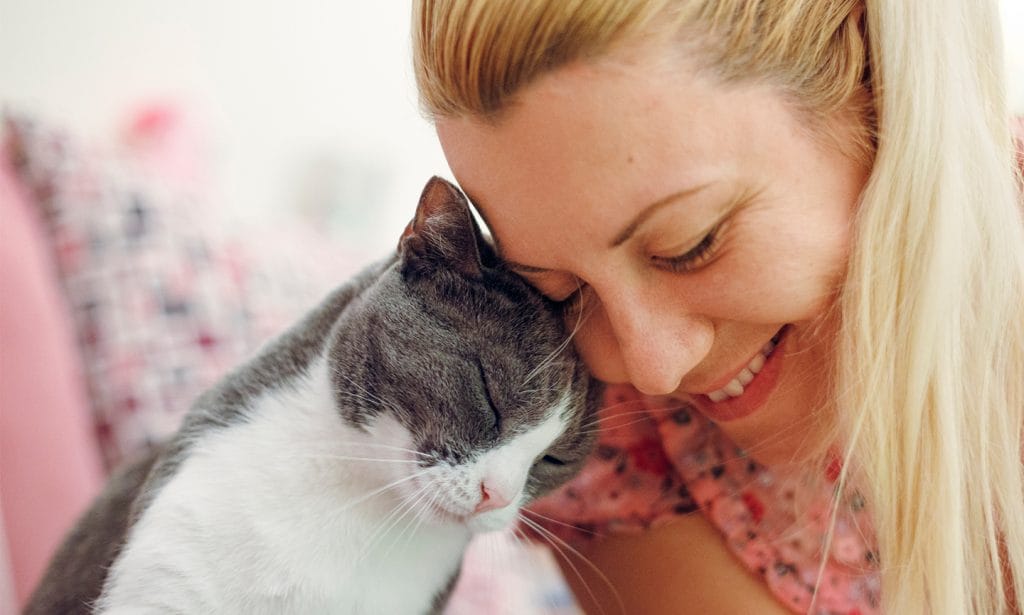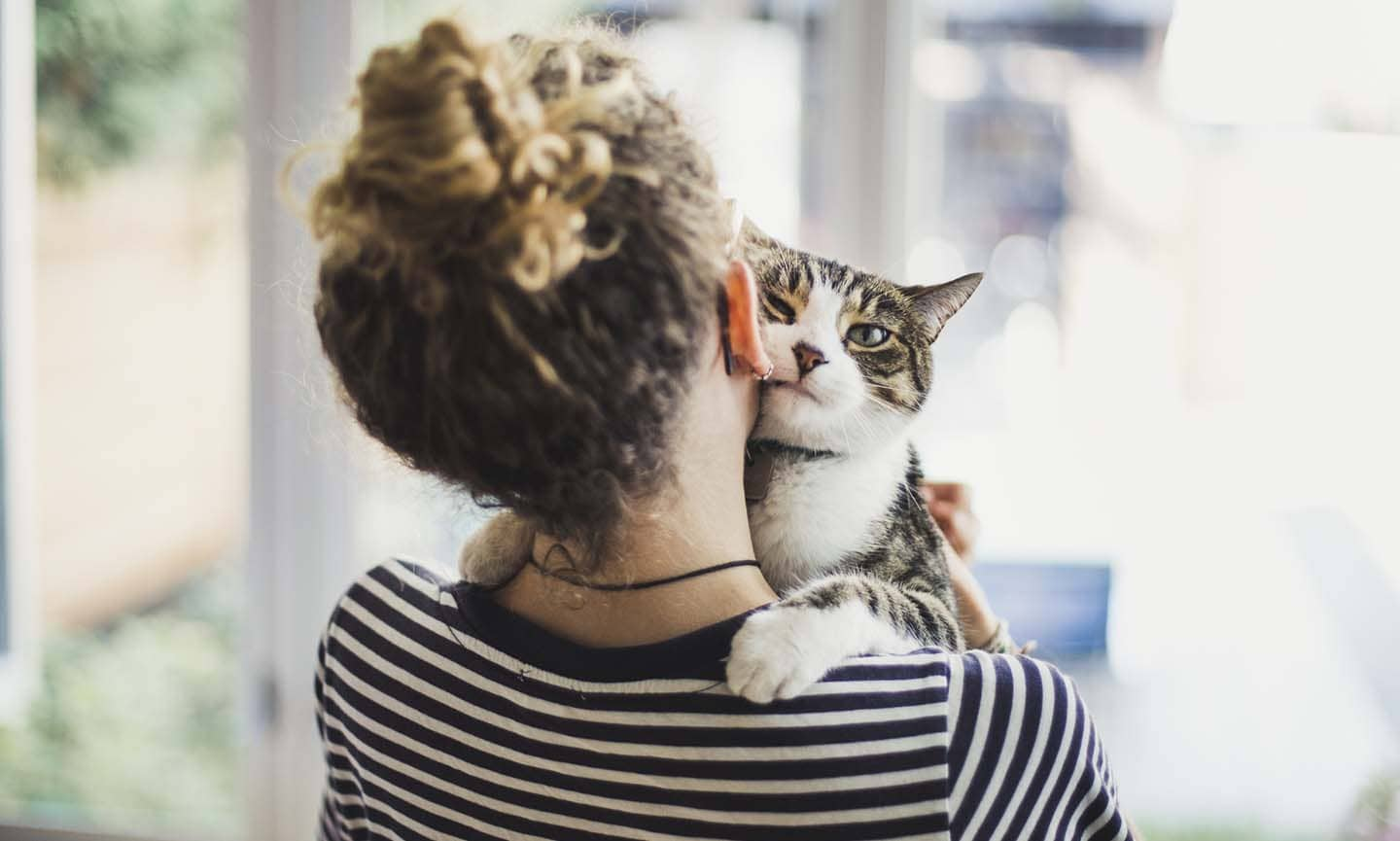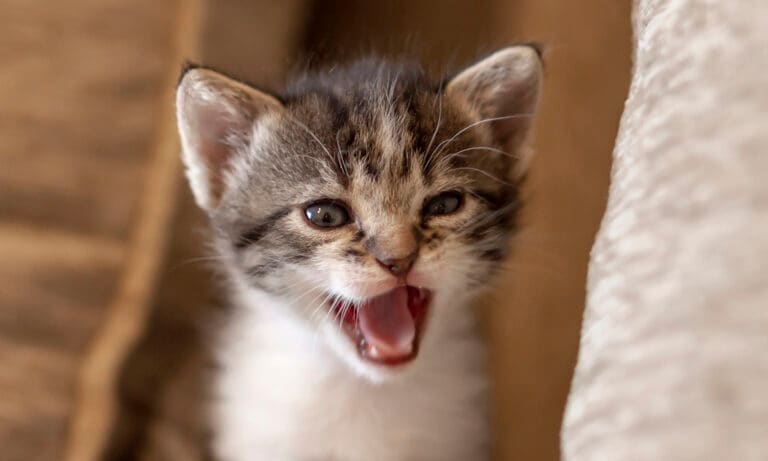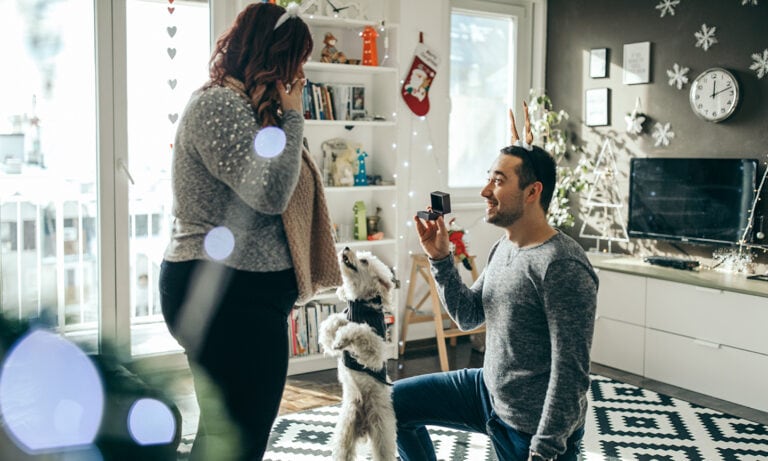Is It True Love?
Sally Morgan, a holistic physical therapist for pets and people and a certified advanced Tellington TTouch Method practitioner for horses and small animals, points out that cat love and trust aren’t mutually exclusive.
“Of course, animals show love for us, and part of that love is indeed built on trust,” says Morgan, who is a certified advanced Tellington TTouch Method practitioner for horses and small animals. According to the TTouch website, the Tellington Method “deepens the relationship with your animals, improves behavior, enhances performance, supports health and well-being and fosters learning.”
“There is a lot of evidence that animals experience many of the same basic emotions as humans,” says Irith Bloom, CPDT-KSA, CBCC-KA, CDBC, KPA CTP, VSPDT, CBATI, who is faculty at Victoria Stilwell Dog Training Academy and DogBiz’s Dog Walking Academy, and owner and director of training at The Sophisticated Dog in Los Angeles.
Morgan agrees, citing a study by neuroscientist Dr. Paul J. Zak, Ph.D., for a BBC2 documentary, “Cats v Dogs,” in which cats’ oxytocin levels (the hug, cuddle, bonding, trust hormone released in a mother bonding with an infant) increased by 12 percent after 10 minutes of playtime with their pet parents.
But Is It Based on Food?
While there may not be solid proof one way or another, cat people like to think that cat love goes beyond feeding time.
It is true that there are many times when cats “show love” and they clearly aren’t looking for food. Morgan recalls that several cats she’s treated as physical therapy patients recognize her years later as they purr and climb into her lap, even if their person says they’re generally standoffish with people. So, at least anecdotally, there is kitty love outside of dinnertime.
That being said, Bloom doesn’t rule out food-based love for some cats. In fact, it’s a good way to encourage an animal to love you.
“Being respectful of all the cat's needs–not just the need for food–and paying attention to the cat’s communication will all help make a cat feel fonder of you,” Bloom says. Of course, a tasty cat treat certainly never hurts.
Dog Love vs. Cat Love
Some cats can even be dog-like, but the way they show their love for humans in general is slightly different.
“Many dogs will be happy to hang out with any human,” says Bloom, because they are social creatures who form friendships easily and hunt in packs. Cats, on the other hand, “do form colonies in some situations, but they are much less likely to spend time with strange cats, and instead tend to focus on spending time with their special friends.”
Morgan adds that cats can be prideful animals who “have wild ancestors that hunt in groups, and so there is a sense of cooperation being advantageous that’s bred into our house kitties.”
Both agree that cats are likely to single out a certain person—someone who might not even feed them—to show some pure kitty love.
“If you are that individual for the cats you know, you’re obviously a special human!” Bloom says.
Perhaps you can say that cats are more selective when bestowing their special brand of cat love upon a lucky recipient.
1. The Slow Blink
This is the famed “cat kiss” or “kitty kiss.” If your cat has half-closed eyes, they're relaxed around you. And if they blink slowly, you’ve definitely captured their heart. Next time you get a cat kiss, try to return it by slowly closing your eyes, counting to two, then slowly opening them. Direct eye contact usually only happens when a cat loves and trusts someone, and it’s their way of showing adoration to their favorite people.
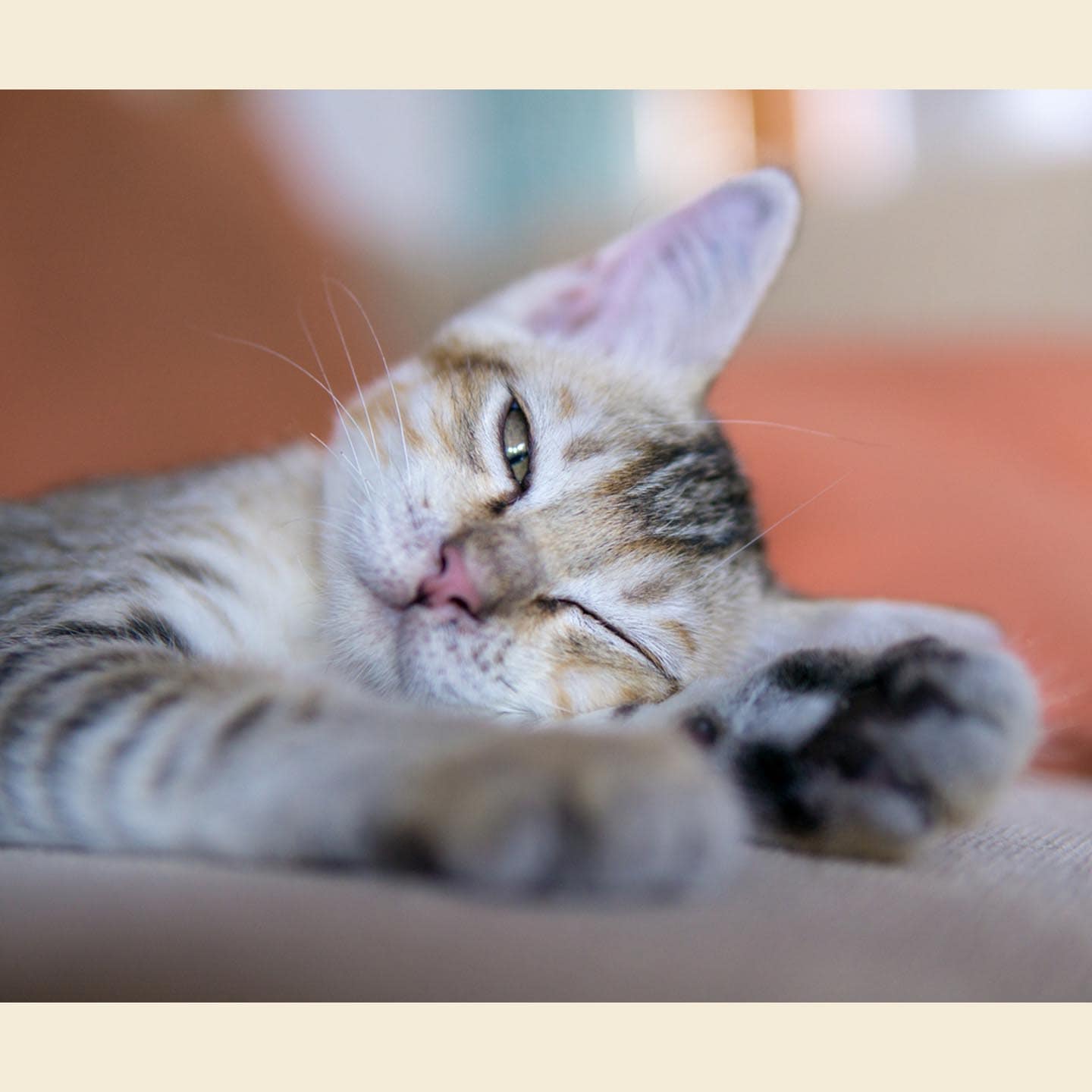
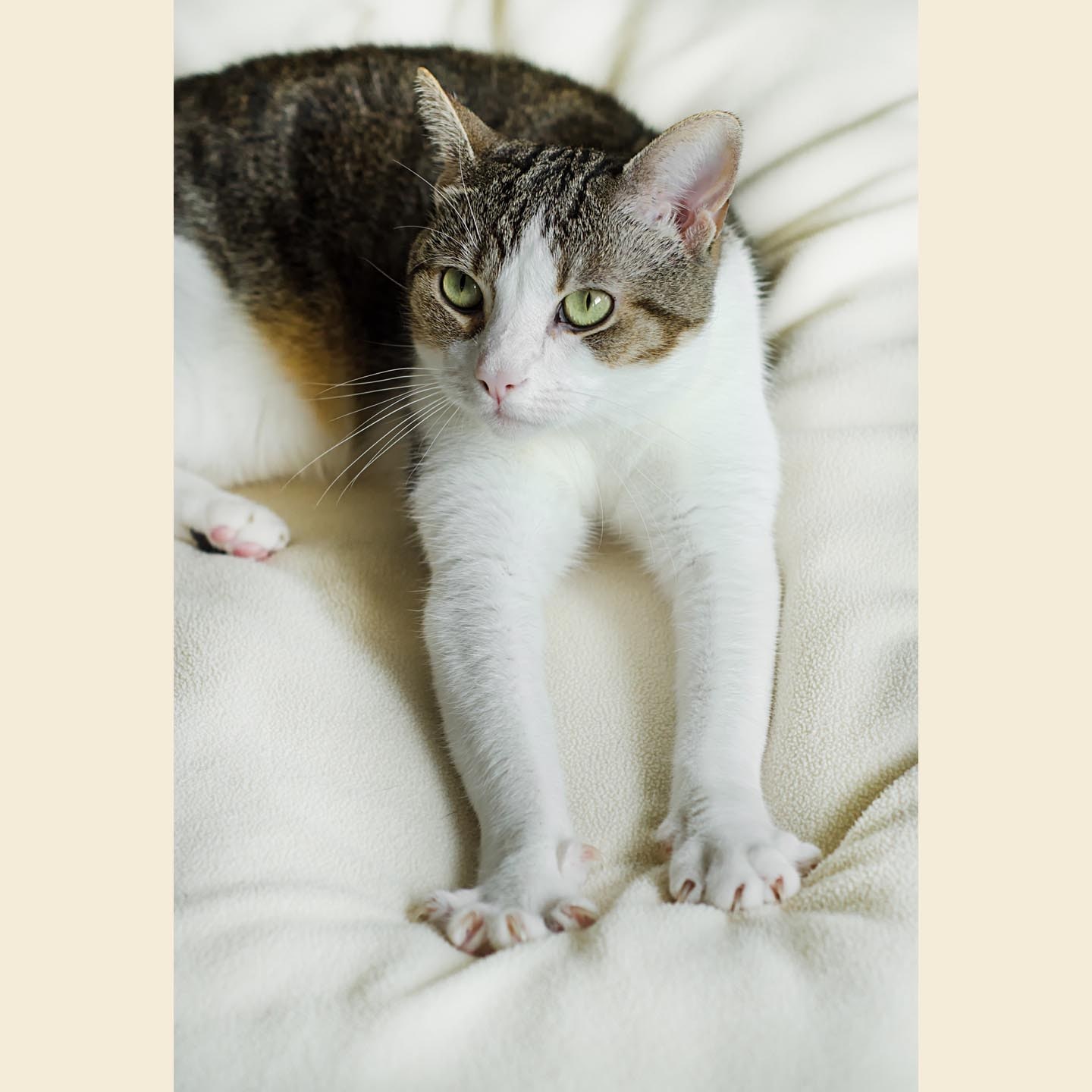
2. Kneading
Cats can show affection by kneading their people with their front paws. “This is a behavior kittens do with their mothers to stimulate the flow of milk, and it is strongly associated with happy times,” explains Bloom. Plus, kneading is a way for cats to activate the scent glands in their paws and mark you as their own.
3. Purring
Cat purrs are another sign of comfort and contentment, especially when cats are resting near you or when you’re petting them.
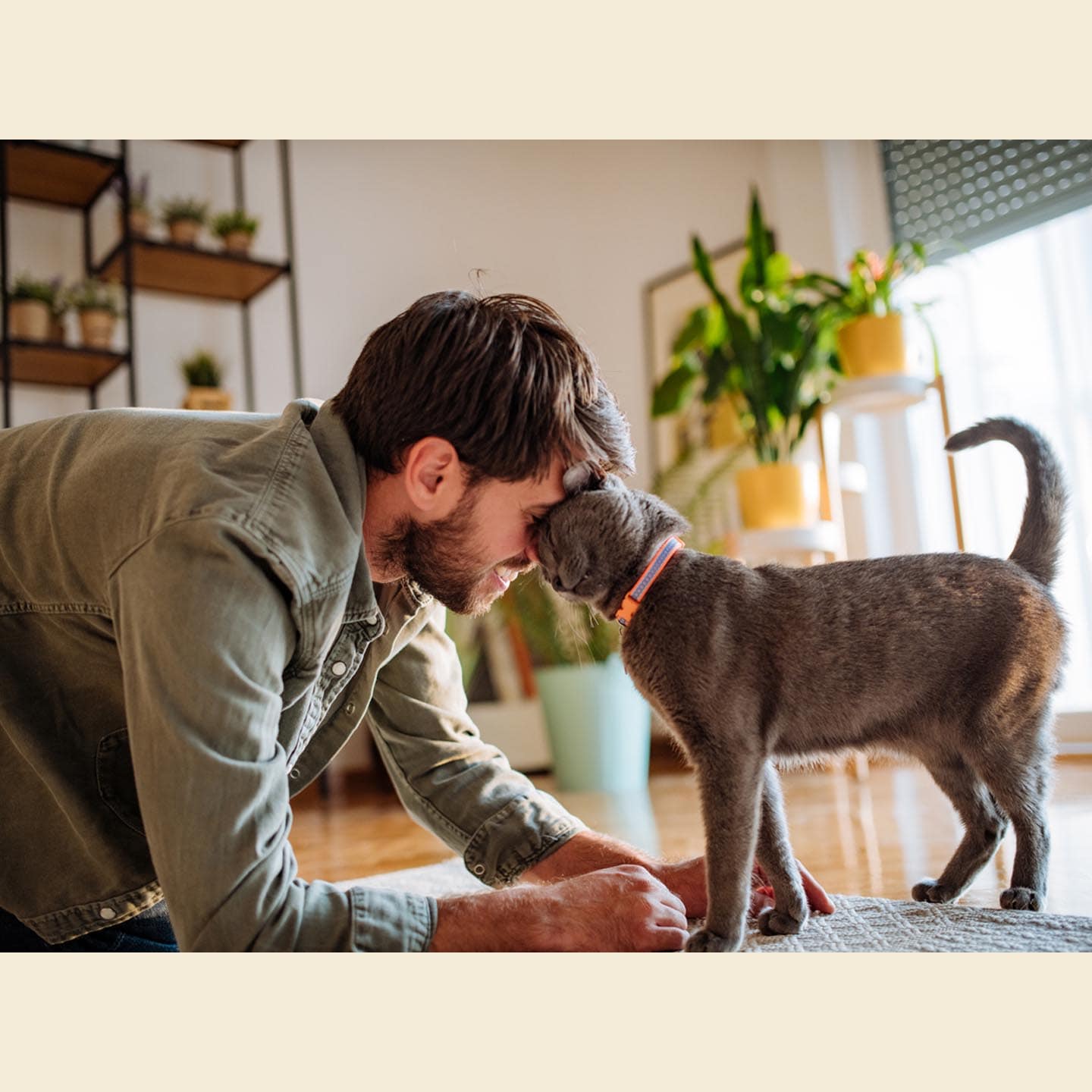
4. Head Butts
Consider yourself special if your cat butts your head. Head butting (also called head bunting) is like a fist bump–but even better. Cats do this to create physical contact, says Bloom, and deposit pheromones, leaving their scent on you to claim you as one of their own. They also leave their scent on their favorite people via cheek rubs.
5. Meowing
But not just any “meow.” According to PetMD, when pet parents speak slowly and softly to their furry friend, you’ll know they’re feeling loved and comfortable when they give short, quiet meows.
6. Licks
Licking signals that a cat trusts you. “If your cat licks you, they are grooming you just like a mother does to her kittens,” says Dr. Rachel Barrack, DVM, a licensed veterinarian, certified veterinary Chinese herbalist and owner of New York City’s Animal Acupuncture. “This is another one of their ways of showing love.”
7. Love Bites
When a cat gifts you with a gentle nibble–or love bite–it's considered a playful sign of love. But when the nibbling crosses into painful territory or gets too aggressive, it's no longer a love bite!

8. Belly Show
This is the ultimate display of trust and cat love. It’s not that often that a kitty will roll over and expose their belly. When they do though, Bloom suggests noting whether their body looks relaxed or tense, because some cats roll onto their backs to get their claws ready for attack.
9. Backing Up
Don’t be offended if your kitty shows you their back end. If it happens regularly, you might be a favored human. You can scratch right above the tail, but only until your cat tells you it’s time to stop.
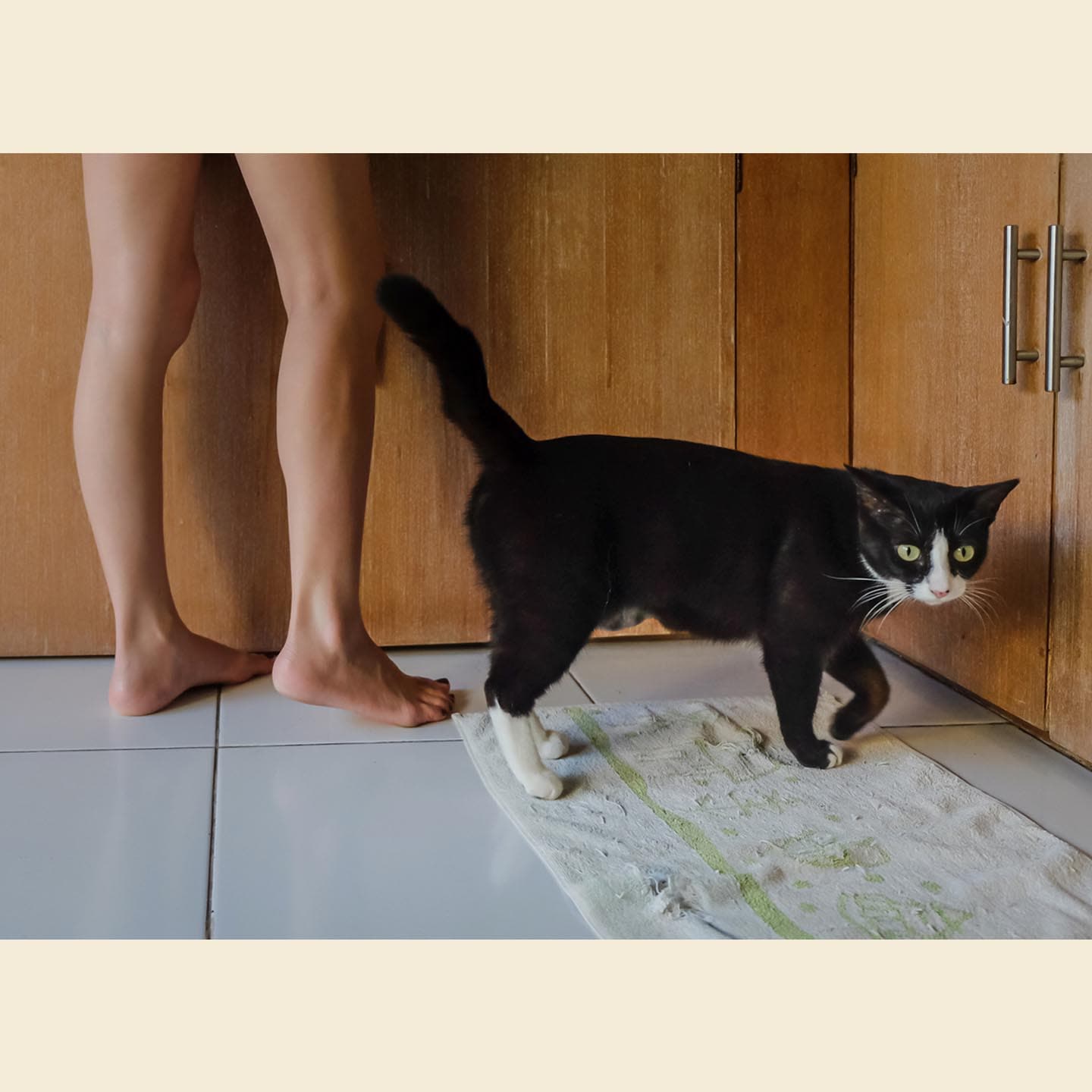
10. Rubbing
Brushing up against you and marking you with their whiskers is a form of kitty love, says Morgan. They usually do this to let everyone know you’re theirs.
11. A Tell-Tail Sign
How does your cat move their tail around? Because, according to Dr. Barrack, your cat’s tail movement is a good indicator of their mood. If they flick the tip of their tail when you’re around, or wrap it around you, they’re saying, “I like you.”
12. Giving Gifts
Sometimes, a cat’s love language is gift-giving; and many times, that could include a dead mouse.
13. Quality Time
Even if a cat’s not a cuddler, they can show love by sleeping near you or greeting you at the door when you come home. Morgan points out that your cat wouldn’t do this if they didn’t love you.
Know Your Cat’s Love Language
You can bond over playtime, using a variety of stimulating cat toys like the KONG Active Feather Teaser. (Pro tip: Go ahead and dip the wand toy in a little catnip for extra fun.)
“With toy play, there is no need to touch the cat, and the cat can always leave the game when they want to,” Bloom says. “By playing with your cat without forcing petting or other physical contact on them, you show the cat that you respect their boundaries.”
On the other side, during quiet time, you can make yourself calmer and therefore more approachable with a little meditation, explains Morgan. Take deep breaths, which will slow your heart rate and calm your mind. You might find that your cat is more drawn to you in this state.
The key to cat love, says Bloom, is to just pay attention. Make note of the times your cat comes closer, and learn what drives them away. Find out what kind of food and treats they prefer. Give them plenty of chin scratches, on their terms, and even try out the slow blink to give a cat kiss.
Cat language is so interesting, right?
Don't Lose Their Love
If you can’t understand a cat’s signs, start by not doing any of these things and really pay attention to your cat’s reactions to you.
“Cats are usually pretty clear about what they like and don’t like, so watch your cat, and always give your cat room to escape when you are in physical contact,” says Bloom.
Bloom’s secret insider tip? Pet your cat in places that another cat would lick during grooming: the head and neck.
Avoid...
- Forced cuddling
- Holding your cat down when they want to get away
- Rough handling and petting
- Patting their head instead of gently petting it
- Rubbing your cat’s belly
Read More
Share:
